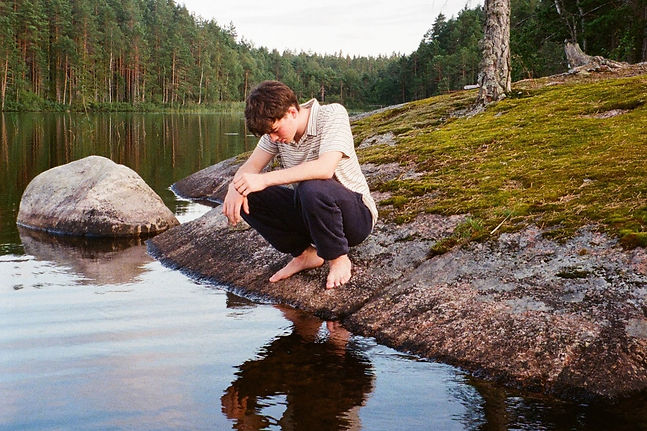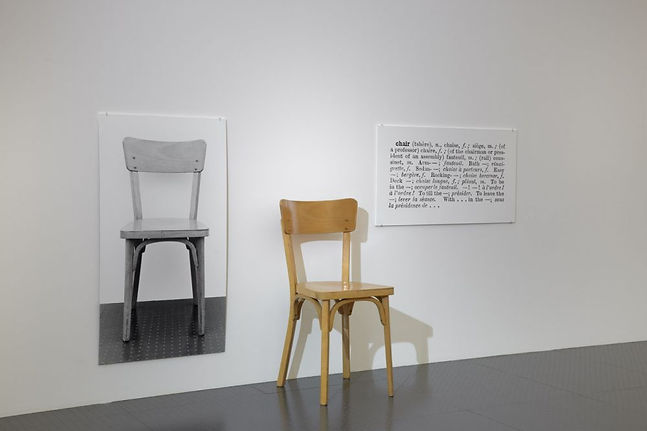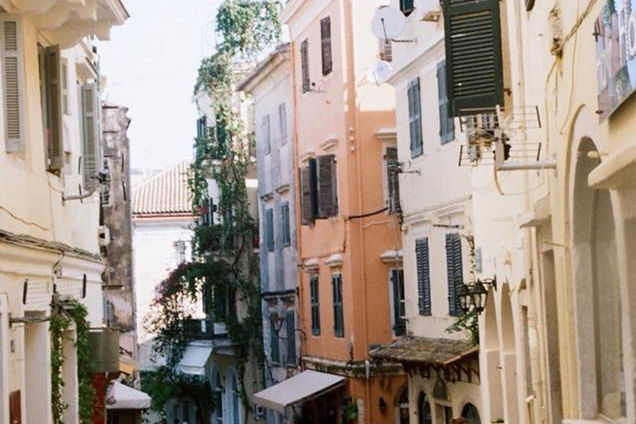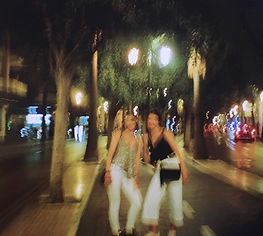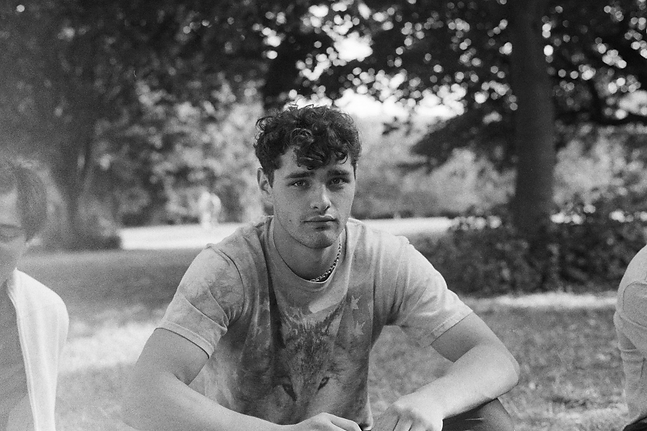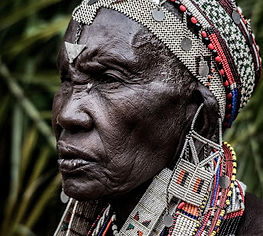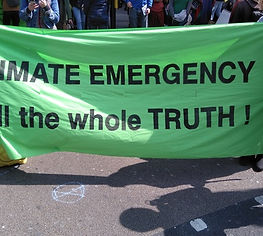
Crossing the Channel of Difference in Covid
Albane Colleau and Constance Byé
There’s no denying that 2020 has been tough for everyone, and students have suffered their fair share. However, as coronavirus experiences go, everyone has a very different perspective on it all. This is why we’ve decided to share our story, to raise awareness on what we feel is a situation that has been overlooked by most in Durham, being a university that somewhat lacks an international student voice.
Let us state once again that this article is not about blaming anyone, or saying all international students have lived the same thing – even both of us have very different views on this. This is simply about retrospectively sharing how we saw this past year, and about our hopes and fears moving forward.
Constance: To start off, let me say that Durham is and has always been a ‘very English’ university. Truth be told when I got here I was slightly scared cultural differences would mean I would only be able to make friends with other French people. And indeed, it was hard and exhausting at first, what with the different humour, the slang, the fact everyone seemed to already know each other from school. But in the end, I managed, and have never had so much fun as I did last year, amongst a fantastic group of friends. Bottom line is I didn’t feel ‘international’. Sure, I still occasionally got reminded of WWII or got called a frog, but generally speaking I felt as integrated in the Durham life as anyone.
Albane: Arriving in Durham felt like starting a new life, probably like most of you. However, making friends was slightly different from my expectations: many people I met already knew a bunch of other students and in only two weeks they had huge friendship groups. I realised that not being perfectly fluent in English and not knowing anyone was making it all a bit harder. Hopefully, I rapidly felt well integrated, everyone was adorable despite some poor French references, including the classic “Voulez-vous coucher avec moi ce soir?” on nights out. Overall, I was living a happy Durham student life, not even missing French food anymore!
Constance: Covid changed that, hitting us hard in March. This was a very stressful and anxious time for everyone, rushing to make plans to get back home. But few people actually realise just how hard it was for international students. I saw most of my friends have their parents drive up to pack their rooms, or help them get back home safely, and with all their belongings. Meanwhile, I was urgently packing a single suitcase, not knowing if my flight would be maintained, not knowing if the borders with Belgium would close before I could get back home, not knowing if the rest of my things would get disposed of when I left; and worst of all not knowing when I would be able to see my friends again. I just couldn’t shake this feeling of panic, and fear of just being utterly alone at that moment, with my family hundreds of kilometres away and unable to help.
Albane: When lockdown rumours started, I felt pretty nervous about such unprecedented measures, but I quickly understood it meant leaving the UK for an uncertain amount of time. Like Constance, I only had a few hours to pack as much as possible and to say goodbye to as many friends as possible. At this point, I wished I was as lucky as my UK friends who seemed quite relaxed, waiting for their parents and not constrained by any deadline. France was also expected to close its borders soon and I was only hoping that my flight wouldn’t get cancelled a third time. Like many of you, I was heartbroken to leave Durham at this time of the year, when I felt at home and had exciting plans coming up. I spent an amazing last night with friends, but I had this very uncomfortable feeling that I would miss out on a lot after I’m gone home. In fact, I was scared that time and distance would damage the relationships I had built from the ground for 6 months…
Constance: Fortunately I managed to get home, and I settled into lockdown life (for the first time). Home for me has always been in big cities; and while I love living in Brussels, lockdown there was certainly less easy than being in the countryside, where most of my English friends had settled. The difference between my friends and I slowly became obvious. Although the situation in Brussels wasn’t as bad as in Paris, it was hard for me to stay put in a city apartment. I couldn’t take long walks outside or escape when I needed to (which is often). Unlike in the UK, masks in Brussels were – and still are- mandatory at all times. I hated walking down the depressingly empty streets, and just constantly being scared of being called out or stopped by the police. It didn’t feel like my city any more, I’d never seen Brussels look like a ghost town before. It made my anxiety levels skyrocket, to the point where I didn’t even want to go on my daily walk any more. Exercise, of course, was out of the question, with gyms and parks closed. I just feel like this is something people that lived lockdown in the countryside would not have had to go through, and even lockdown measures in London were never as harsh as in European capitals. It heightened the difference I felt being French in an English university, even though I wasn’t even at Durham. This feeling was made worse as time went on and lockdown was gradually relaxed. Most of my English friends live in the same area, and it was easy for them to see each other or organise walks, trips to the beach or invite themselves to each other’s houses. Or meet up in London. Not to say they shouldn’t have, or that they purposefully excluded me. Of course not. The virus did. This just to give my perspective as an international student, and show the impact lockdown had on my university friendships- it was hard to see the fun they were having while being hundreds of kilometres away. And don’t get me wrong, it was so nice to see my friends from home, but as Albane said, in the end I do feel like I missed out on a lot.
Albane: I enjoyed my French lockdown with my family but I wouldn’t say I was happy overall. It’s been tough for everyone, but I’m not sure many Durham people realise how hard it’s been (and still is) for foreign students in particular. Drawing a line on my student life was one thing but seeing my UK friends spend fun times together made me feel sort of excluded, especially because I couldn’t do the same in Paris. That might seem overdramatic but lockdown in France was quite different to that of the UK. I could only go outside once a day and for no more than an hour. I had to be alone and I couldn’t go further than one kilometre away from my flat, whether I was food shopping or running. Believe me, those measures were making me anxious, regularly checking the time and how far I was from my building. Masks were also compulsory alongside the governmental form that justified my time outside. Controls were frequent and I could see the police walking down my street several times a day. One sad fact is that whenever I would walk past a police officer, I wouldn’t feel protected or safe like before but I’d feel scared. Lockdown in Paris also meant spending two months in a flat, with incredible weather – which some of you might know is horrible in this city because you can’t escape from it: there is no AC in most buildings so either you accept to be hot or you live with all shutters closed (which adds some saddeness to the whole not-so-exciting situation). In addition, the ‘arrondissement’ I live in is known for its liveliness, with its hundreds of restaurants, bars and shops; witnessing its emptiness was quite tough. I simply didn’t feel at home anymore. For two months and a half, I lived two minutes away from friends that I hadn’t seen in eight months – somewhat missing out on things in France too – and who I didn’t get a chance to meet before June. For two months, all my friendships were fully relying on texts and calls. That is mad. And we can all agree it’s pretty hard to deepen relationships through the phone. But it’s even harder when most of your friends can do so, as they still have some sort of social life. It was obviously no one’s fault and I was happy my friends in the UK could make the most of their quarantine. Coronavirus has been unfair on everyone, and it made me feel rather alone, regarding both my home and uni friendships. Overall, it was sad to notice the change that occurred from how integrated I felt before lockdown, and the feeling of missing out constantly growing during lockdown.
Constance: I was overjoyed to find out we could come back in September. I think that for most international students, and definitely for me, coming back to university is always more exciting.. Consider that for us it involves a long trip, changing countries and what you’re used to, and living a completely different life. It’s hard to explain how Durham can in any way feel ‘exotic’, but it really does to me. I was finally reunited with my friends, and things could go back to ‘normal’. I didn’t really mind the second lockdown in Durham. Sure, it was frustrating missing out on all the opportunities we had last year (and pubs closing was quite a blow), but in the end I was very happy to be in Durham and not Brussels this time. I think as an international student this also made me realise how attached I am to Durham, and how much more independent and committed I feel staying here. The downside of this is nonetheless quite strong as well. You feel once more very far away from your family. This isn’t helped by the fact it’s almost logistically impossible for international students to own a car in Durham, meaning we can’t just go home anytime we feel like it. Planning even a weekend home is complicated, and expensive. This was heightened with Covid. Upon coming back in September, I really saw the borders as very real, and very able to shut me off once again.
Albane: I was lucky enough to come back to Durham for a few days at the start of July and it was probably the highlight of my summer; I couldn’t wait to return in late September. As much as I love being home, I had chosen to study in the UK and I didn’t want anything to stop me from living this abroad experience I’d dreamt of for several years. Even if it implied a two-week quarantine, a reduced social life and all my classes to go online. I had been away from Durham for the whole lockdown and for most of my summer time; my only wish was to resume my student life and reunite with those I hadn’t seen since March! In fact, I was actually excited to live in such special circumstances in Durham. I was also aware the borders could now suddenly close for real and I could get ‘stuck’ in England. However, when the UK went into its second lockdown, even though my family wanted me to come back home, this time I didn’t hesitate a second and chose to stay as I really didn’t want to miss out on anything anymore. However, I was sadly surprised when some English friends decided to go home. I realised how relatively free UK students were, in comparison with foreigners: they can go home rather whenever they want, and most luckily they don’t fear being stuck in Durham.
Constance: I can tell you as an international student that not coming back to Durham for the start of this term was out of the question. I was determined to come back to Durham for all the reasons listed above. I also feared if I waited too long, the borders would shut again for good, and I wouldn’t be able to come back for quite some time. This is something that once again highlights the difference between me and most of my English friends. Most of them have decided they will delay their return to university, because they are lucky enough to be able to do so without fear of borders closing, or trains and flights being cancelled. Like Albane just pointed out, all they have to do is drive up, and have the luxury of being able to make a decision as late as they want. I also think being in the UK, they don’t have this same feeling of missing out, and why would they?
Albane: I absolutely wanted to return to Durham too. The uncertain situation created stress regarding the likeliness of borders to close again. In addition, I was also fearing to be alone in my house, and travelling to Durham represents more of a commitment than it does to people living in the UK. Even though my parents didn’t want me to leave, I couldn’t picture to completely renounce my student life. Studying online was already tough, but being in another country would have made it even worse. I’ve returned safely to Durham before the start of the term and although the city is pretty empty, I’m glad I came back. I feel at home in my house, and I enjoy wintery-looking Durham. One of my dearest wishes is obviously to have some ‘normal’ social time again soon, seeing all my friends and meeting new people. However, looking at what I’ve been through during the pandemic, I can’t help myself but wonder about the impacts of Covid on my social life in Durham. Should I focus more on deepening my relationships with internationals, and French people in particular? Indeed, I’ve realised I can’t ignore that I don’t live in the UK and that I’m simply not English. It is a sad idea especially because the very first social objective I set to myself when I arrived at university was not to hang out with French people and to have the most English experience possible. And I can’t help but ask myself, after these events heightened my differences with UK people, if I should still put my social efforts towards this initial goal… Covid has shown living abroad interfered with my friendships in the UK, and I have one main fear for Durham’s social future: might the now undeniable differences between internationals and UK students lead international students to group themselves together more than before? I’m scared Durham could become somewhat more fragmented than it already is…
This new lockdown is a big blow for everyone, in particular international students, whose majority desperately hopes to make it to Durham before Easter break. Covid, and more recently Brexit, made all of us realise how real borders are and can close at any point. It intensified in a way the differences between internationals and UK students, even though we’re all spread out in Durham within colleges, courses, activities and so on. All university students have been undoubtedly impacted by the pandemic, losing out on their education but also on their social life. Living abroad, we’ve been yanked back and forth between two countries, but especially severely disadvantaged against building formative friendships, and this is something we hope will get better in the future. We remain optimistic and hopeful!


